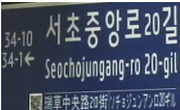In this study, the effects of cement types and mix proportions on chloride diffusion properties, compressive strength, freeze-thaw resistance and carbonation were investigated. For rapid investigation of chloride diffusion properties, an accelerated t...
http://chineseinput.net/에서 pinyin(병음)방식으로 중국어를 변환할 수 있습니다.
변환된 중국어를 복사하여 사용하시면 됩니다.
- 中文 을 입력하시려면 zhongwen을 입력하시고 space를누르시면됩니다.
- 北京 을 입력하시려면 beijing을 입력하시고 space를 누르시면 됩니다.
콘크리트 구조물의 내구성 향상을 위한 시멘트 종류별 특성 연구 : (Effect of Cement Types on the Durability of Concrete Structures)
한글로보기https://www.riss.kr/link?id=G3624575
-
저자
이용은 ; 김진철 ; 이찬영 ; 안중근(한국도로공사 도로연구소)
- 발행기관
-
발행연도
1999년
-
작성언어
Korean
- 주제어
-
자료형태
한국건설기술연구원
-
수록면
218
-
0
상세조회 -
0
다운로드
부가정보
다국어 초록 (Multilingual Abstract)
In this study, the effects of cement types and mix proportions on chloride diffusion properties, compressive strength, freeze-thaw resistance and carbonation were investigated. For rapid investigation of chloride diffusion properties, an accelerated test was adopted and a novel diffusion coefficient analysis model for this. Preliminary experiments determined the parameters for the accelerated method as 5M of chloride ion concentration, 10 volt of supplied potential and 30mm of specimen thickness. The diffusion coefficient of blended cement concrete was reduced remarkably in comparison with that of portland cement concrete. The results of freeze-thaw cycle test showed that the effective freeze?thaw resistance can be attained by 4% of entrained air using air-entraining agent, irrespective of cement types. In the accelerated carbonation test, the average carbonation rate of the blended cement concrete was higher than that of the portland cement concrete. The carbonation periods of concrete with 6cm of cover thickness were estimated to be 899 years and 161 years in the case of ordinary portland cement concrete and 60% blast-furnace slag-blended cement concrete, respectively.
국문 초록 (Abstract)
촉진 시험의 적정 조건은 염소이온 농도 5M, 공급 전압 10 volts, 시편두께 30mm로 얻어졌으며, 시멘트 종류별 촉진 염소이온 확산실험에서 혼합시멘트계 콘크리트의 확산계수가 포틀랜드계 시...
촉진 시험의 적정 조건은 염소이온 농도 5M, 공급 전압 10 volts, 시편두께 30mm로 얻어졌으며, 시멘트 종류별 촉진 염소이온 확산실험에서 혼합시멘트계 콘크리트의 확산계수가 포틀랜드계 시멘트를 사용했을 때보다 현저히 감소하였다. 동결융해저항성 실험결과에서 시멘트 종류에 따른 영향은 거의 없고 4% 이상의 공기량을 확보하면 우수한 동결응해 저항성을 갖는 콘크리트를 제조할 수 있었다. 촉진 중성화 시험 결과에서는 혼합시멘트계 콘크리트의 평균 중성화 속도가 포틀랜드계 시멘트를 사용한 콘크리트의 경우보다 빨랐고 이 결과로부터 철근위치에 중성화가 도달하는 기간을 예측한 결과 보통 포틀랜드 시멘트를 사용한 경우 약 899년, 슬래그 60% 혼합시멘트의 경우 약 161년으로 예측되었다.
목차 (Table of Contents)
- 목차
- 표목차
- 그림목차
- 사진목차
- 요약문
- 목차
- 표목차
- 그림목차
- 사진목차
- 요약문
- ABSTRACT
- 제1장 서론
- 1.1 연구의 배경 및 목적
- 1.2 연구내용 및 범위
- 제2장 유해이온에 의한 콘크리트의 내구성 저하
- 2.1 콘크리트의 내구성과 수명
- 2.2 내구성 저하 원인
- 2.3 동결융해
- 2.4 중성화
- 2.5 염소이온의 영향
- 2.6 내해수성
- 2.7 철근부식 방지를 위한 염소이온 허용기준
- 제3장 염소이온 침투 및 확산 모델
- 3.1 유해이온 침투 기구와 정의
- 3.2 Non-stationary 상태
- 3.3 Stationary 상태
- 3.4 새로운 염화물 확산계수 산정모델의 제안
- 제4장 실험개요
- 4.1 사용재료
- 4.2 콘크리트의 배합
- 4.3 실험방법
- 제5장 실험결과 및 고찰
- 5.1 굳지 않은 콘크리트의 물성시험결과
- 5.2 확산실험 결과 및 고찰
- 5.3 염소이온 확산을 고려한 내구연한 예측결과
- 5.4 압축강도 측정결과
- 5.5 동결융해 저항성 실험결과
- 5.6 촉진중성화 실험결과
- 제6장 결론
- 참고문헌











